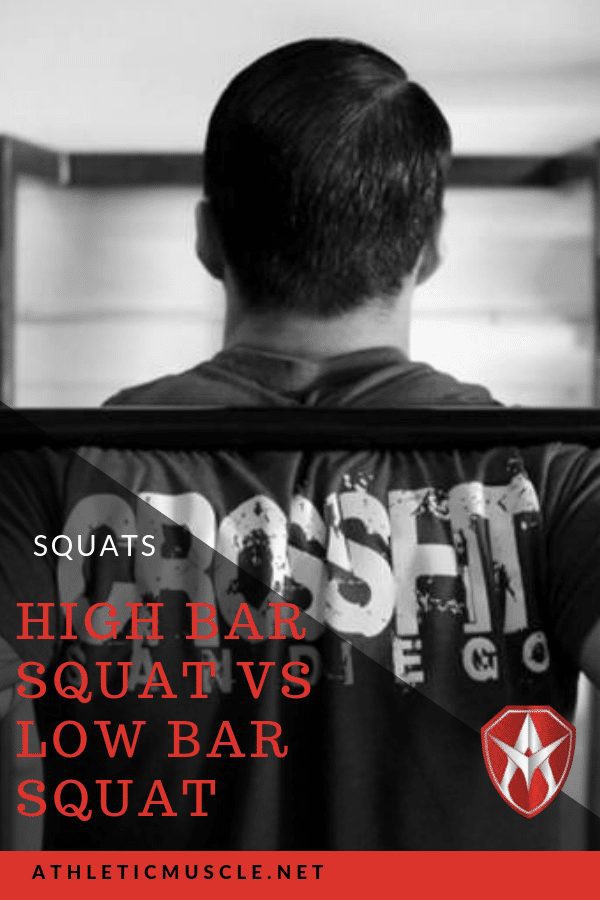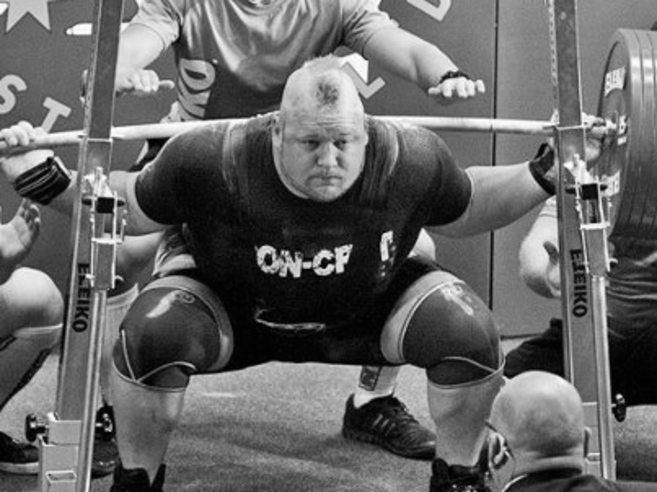The Barbell Back Squat: Is It Better To Place The Bar High Or Low?
If you’ve been exposed to different lifting worlds, you may have heard of high bar squats and low bar squats. You may be wondering if it matters. Well, it does because where you place the bar determines the force angles and postures. Those angles influence how the lower back, legs, and hips work in performing the back squat. Also, the position of the bar depends on what your training goals are.
Related: Best CrossFit Barbell to PR your WOD in 2021
Proper Squat Form
The barbell squat is the same for the high bar and low bar squats. The feet are positioned between the hips and shoulder width apart – or as far apart as you feel comfortable.
The movement starts with bending at the hip and descending the butt down as low as you’re comfortable going. The ascent incorporates a combination of the quads, hamstring, and glute muscles.
As mentioned before, in the back squat, the position of the bar will determine which muscles are the dominant movers.
Read Also: Rogue Ohio Power Bar Review – A comprehensive buyer’s guide
What Is A High Bar Squat?

This is a common bodybuilder exercise. It’s when the barbell is placed across the top of the traps. This position allows for the upright torso position you see when it’s being performed. With the high bar squat you engage more the quads and glutes for hip drive.
When doing this squat, your hands should be as close to your shoulders as you can get them while being comfortable. Your grip should be firm with your thumb wrapped around the bar. Elbows are down but more behind the bar than in front of it.
Reasons for incorporating high bar squats in your workouts:
- When you’re trying to build strength and size in the quads.
- When you have limited shoulder external rotation.
- When you have back problems.
What Is A Low Bar Squat?
This is a powerlifter exercise. It’s when the barbell is placed three to four inches lower than you would for the high bar squat. The bar should rest underneath the spine of the scapula on top of the rear delts. This allows for a more forward torso position. With the low bar squat you engage more the hamstrings – or posterior chain – for hip drive.
When doing this squat, you don’t want to wrap your thumb around the bar. Your elbows should stay up behind the bar (not underneath the bar). Your hands should be as close as you can get them to your shoulders without discomfort.
When performing the low bar squat, your torso will come forward more than it would if you were to do a high bar squat. That’s OK. This is necessary because of the placement of the bar and for hamstring engagement.

Reasons for incorporating low bar squats in your workouts:
- When emphasizing the hips and low back
- When you’re more quad dominant.
- If you lack ankle mobility.
- If you have good shoulder mobility
Which Back Squat Is Better To Do?
Both have their pros and cons. The high bar and low bar squat place loads onto the body in different ways. Meaning that both engage musculature differently.
High bar pros: When you master the high bar squat you also improve your front squat, cleans, snatches, and thrusters. So it makes sense to do more high bar squats to improve your PR’s in these.
High bar cons: Only doing high bar squats will overlook the hamstrings. If you’re a fan of the high bar squat, make sure to include RDL’s in your workouts for balance.
The high bar squat also places anterior force on the knees. So if you have knee problems you may want to balance low bar squats with high bar squats in your workouts.
Low bar pros: When you master the low bar squat, you improve your deadlifts. With this squat, you also keep less stress on the knees because your hamstrings are engaged during the lift.
Low bar cons: If you only do low bar squats in your workouts, you’ll only work your posterior chain. That means that your front, OH, cleans, and snatches will not be as good as they should be.
The low bar squat is also a difficult exercise to master. This one will take time and patience.
Conclusion
For CrossFit purposes, the high bar squat will benefit other lifts but that doesn’t mean you can’t include low bar squats. And since you should be training to strengthen your weaknesses, both squats can be incorporated for balance.
If you have shoulder issues and either high or low bar squatting creates discomfort, try front squatting until you get the mobility you need. You should also be working on shoulder mobility with pass-throughs and voodoo flossing.
In general, the back squat you do should be to help you achieve your goals from a muscular development, strength, and performance perspective.
Go get your squat on.

